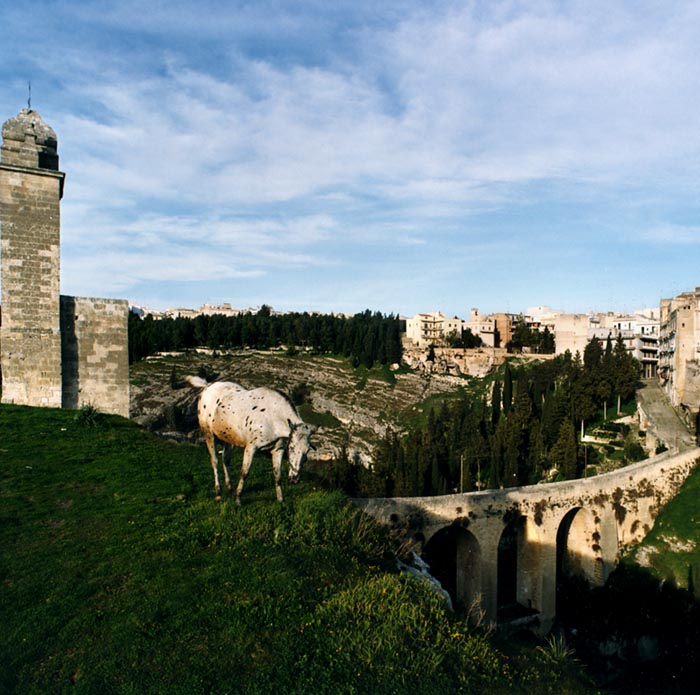The Limestone Murgia and Itria Valley.

This trip into the white wine areas of Puglia begins inGravina in Puglia(Bari Province), and moves from theGravina Docterritory to theItria Valleyvineyards, which produce theLocorotondoandMartina Franca Docwines. This part of Puglia is ideally suited to varieties likeGreco,Malvasia Bianca,Verdeca,Bianco di AlessanoandFiano; the special climate and marked differences between day and night-time temperatures give wines their intense fruity and floral fragrances. Red varieties like Nero di Troia and Primitivo are less common in this part of Puglia, but are much appreciated for the definite character of their wines. Over the centuries, water has left very visible signs of its movement in theGravinacountryside, especially caves, some of which are open to visitors. The present-day city developed from a flourishing cave settlement, and is now an agricultural centre.Altamurais just a few kilometers away, with its precious archaeological remains as proof of a remote past. These are the skeleton of Altamura Man, who lived 200 to 300 thousand years ago, and the world’s greatest concentration of dinosaur tracks in the Pontrelli quarry from at least five distinct species of carnivores and herbivores, who lived in the area 80 million years ago.Altamura’s traditional breadis known for its excellent quality, and was the first bakery product in Europe to obtain Dop certification. Our trip now continues towards the Itria Valley, with its delicious white wines, its grassy pastures, olive trees, vineyards and picturesque old towns.Locorotondois a small, circular, white city surrounded by neat rows of Fiano, Bianco d’Alessano and Verdeca vines. This is the home of Locorotondo Doc wine, and is one of the most beautiful towns in Italy, situated in an area of holiday homes with a wealth of small restaurants and trattorie to discover. Martina Francais a few kilometers away; the local Doc takes its name from the town and is made using Fiano, Bianco d’Alessano and Verdeca grapes. For three centuries Martina Franca was a feudal possession of the Neapolitan Caracciolo family, and the town is a very lovely combination of Mediterranean and sober Baroque architecture. It is known for its delicious capocollo, and for its Murgia Horse farms. After travelling through a hilly landscape where old agricultural traditions are still alive, you finally come toAlberobello. The city’s famous trulli are the typical conical stone houses which are symbolic of theItria Valley, and the town centre is now aUnesco World Heritage Site.
